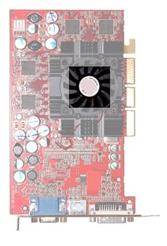VOCABULARY PRACTICE SECTION 2
1. Match the sentence beginnings (1-6) with the correct endings (a-f).
| 1. The CPU processes data and | a. areas within the CPU. |
| 2. The control unit is the part of the CPU that | b. you can't make changes to it. |
| 3. The arithmetic and logic unit is able to make | с. calculations: add, subtract, multiply and divide. |
| 4. The registers are high-speed storage | d. the computer is turned off. |
| 5. Data contained in RAM is lost when | e. coordinates the other parts of the computer. |
| 6. ROM memory can only be read: | f. controls the way instructions are executed |
2. Match the terms with the definitions.
| 1. CPU | a) performs the processing operations; |

|
| 2. CU | b) carries out logical comparisons of storage; | |
| 3. ALU | с) executes basic arithmetic functions; | |
| 4. accumulator | d) coordinates the operation of the whole system; | |
| 5. clock | e) selects data from memory; | |
| 6. counter | f) produces electronic marks at regular intervals; | |
| 7. register | g) controls the flow between the primary storage and the arithmetic-logical unit; | |
| 8. decoder | h) keeps the instruction while it is being performed; | |
| 9. comparer | i) holds the results of processing operations; | |
| 10. adder | j) breaks the instructions into separate commands. |
3. Complete these definitions from an ICT dictionary by inserting terms from the box. Here is one extra word.

- The ……. , or CPU, is like a ’brain’ which performs tasks for your computer.
- The CPU is built into a single ……. that executes program instructions and coordinates activities within the system.
- The ……. is the part of the processor which is responsible for loading and interpreting the individual instructions that make up a computer program.
- ……. is measured in gigahertz; for example, a processor running at 4Ghz would give you all the performance you need to run most applications.
- ……. are electrical channels that allow devices inside the computer to communicate.
4. Decide if the sentences are true (T) or false (F), and rewrite the false ones to make them true.
1. RAM stands for Random Access Memory.
2. If memory is volatile, it means that information is lost when the computer is turned off.
3. RAM is non-volatile. ROM is volatile.
4. DIMMs can be used to expand RAM capacity.
5. The CPU directs and coordinates the activities taking place within the computer system.
6. The arithmetic logic unit performs calculations on the data.
7. 32-bit processors can handle more information than 64-bit processors.
8. RAM, ROM and secondary storage are the components of the main memory
9. A chip is an electronic device made of silicon elements containing a set of integrated circuits.
10. Information cannot be processed by the microprocessor if it is not loaded into the main memory.
11. Permanent storage of information is provided by RAM (random access memory).
12. The speed of the microprocessor is measured in gigahertz or megahertz.
13. One GHz is equivalent to one thousand MHz.
14. One MHz is equivalent to one million cycles per second.
5. Choose the correct word to fill the gaps.
1. Computer data ………. system frees humans from routine error-prone tasks.
a) counting; b) computing; c) processing.
2. Computers can store vast amount of information to organize it and ………. it.
a) to travel; b) to retrieve; c) to respond.
3. The entered data can be transmitted by ………. networks.
a) communications; b) conversions; c) procession.
4. The possibility of ………. is reduced if data were correctly put into the data processing system.
a) character; b) access; c) error.
5. Computer data processing systems can ………. at a fraction of a second.
| a) receive; b) respond; c) retrieve. 6. Computer systems are vulnerable to the entry of ……… data. a) invalid; b) invariable; c) invisible. 7. Programs and data to be processed must be in the ……… memory. a) internal; b) external; c) secondary. | 
|
8. The results of arithmetic operations are returned to the ……. for transferring to main storage.
a) decoder; b) counter; c) accumulator.
9. The instruction to be ..... in control unit is read out from primary storage into the storage register.
a) calculated; b) executed; c) read out.
10. The ….. performs logical comparisons of the contents of the storage register and the .... .
a) adder; b) accumulator; c) comparer.
11. The read out command is passed from the ………. register to the ………. register.
a) instruction; b) address; c) storage.
12. CPU is designed to ……. and to ………. basic instructions for the computer.
a) control; b) consist; c) carry out.
13.CU and ALU consist of electronic circuits with millions of …… .
a) sensors; b) servers; c) switches.
Дата добавления: 2015-07-30; просмотров: 3510;
